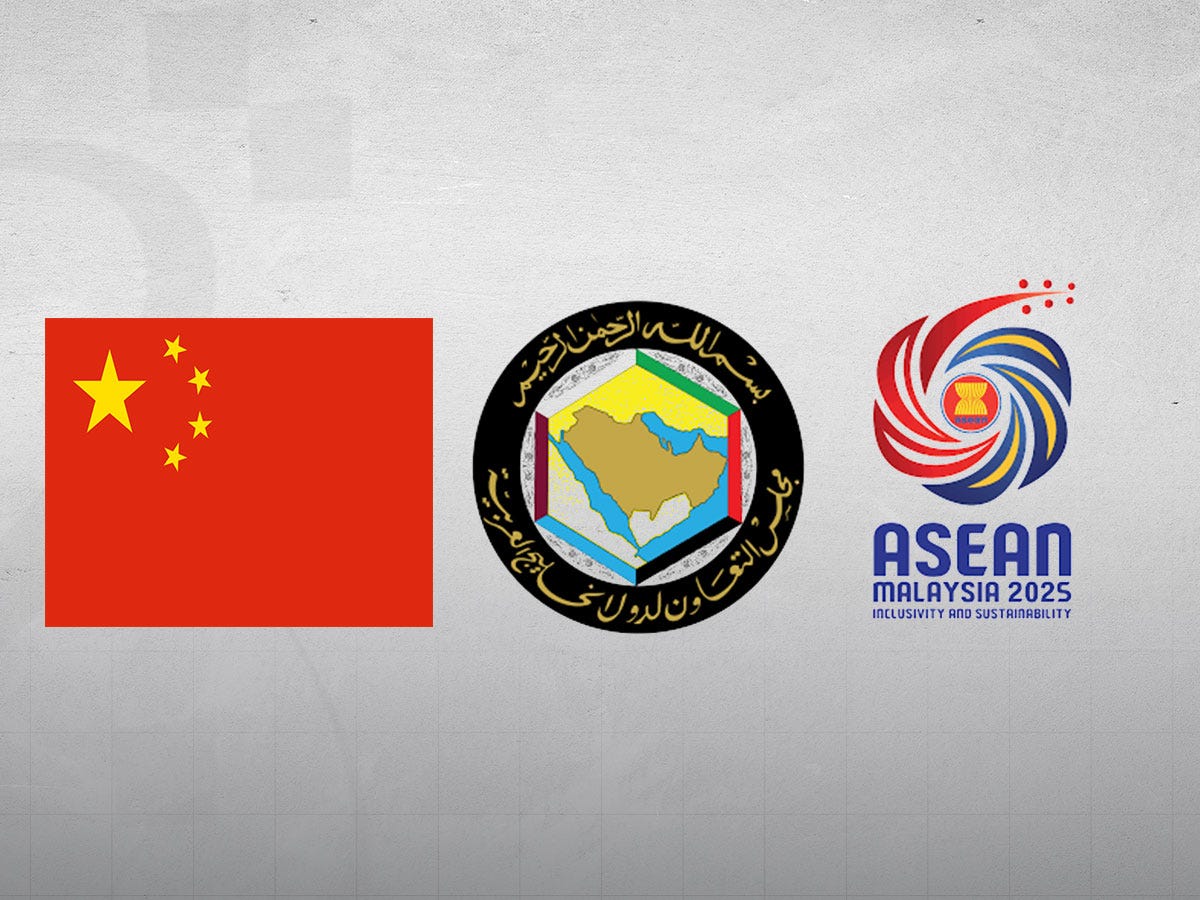ASEAN-GCC-China Summit Wraps
I’m on my way to the airport for a short trip, so unless there’s unusually interesting news over the next 4 days I likely won’t post until Monday.
The inaugural ASEAN-GCC-China Summit has concluded, and at first blush there doesn’t seem to be any substantial innovations or outcomes beyond the summit itself. China has adopted a trial visa-free entry for Saudi Arabia, Oman, Kuwait, and Bahrain. Since UAE and Qatar already have visa-free entry to China this completes the set. A new (and incorrect) mathematical equation was rolled out for the grouping: 1+1+1>3. Everyone thanked Malaysian PM Anwar Ibrahim for bringing the summit together, which seems to confirm my speculation that this was more of a Malaysian initiative than an ASEAN one.
In reading the joint statement I don’t see any tangible outcomes that we haven’t heard before. There is a lot of exploring, enhancing, strengthening, promoting, and encouraging. With 17 governments and two major regional groupings it was probably a lot of work putting the statement together, finding ways to fit in everyone’s priority points and making sure to include BRI cooperation and Global Initiatives.
I suppose the event itself was the outcome, and perhaps the sideline meetings and conversations will bear fruit, but really, this seemed like the definition of a meeting that could have been an email.
For those of you tracking the GCC delegations, Qatari Amir Sheikh Tamim bin Hamad al-Thani was the only Gulf head of state to attend. Bahrain’s delegation was led by Crown Prince and Prime Minister Salman Hamad Al Khalifa, and Kuwait’s by Crown Prince Sheikh Sabah Al-Khaled Al-Hamad Al-Sabah. Saudi Arabia sent Minister of Foreign Affairs Prince Faisal bin Farhan, the UAE was represented by Sheikh Saud bin Saqr Al Qasimi, ruler of Ras Al Khaimah, while Oman was led by Sayyid Asa'ad bin Tarik Al Said, Deputy Prime Minister for International Relations and Cooperation Affairs.
The Chinese side was represented by Premier Li Qiang, who has been handling most GCC-related files. His opening remarks used the triad nature of the meeting, noting that “If we take a look at the world map and draw a line between China, ASEAN and the GCC, we will get a big triangle. As we know, triangle is the most stable structure.” He extended this to trade: “The China-ASEAN Free Trade Area 3.0 upgrade negotiations have been fully concluded. It is hoped that the negotiations for the China-GCC Free Trade Agreement can also be concluded as early as possible to take trilateral trade to a higher level.” As someone who’s been watching the China-GCC FTA process for 15 years or so, I admire his optimism, and remember when Xi Jinping called for it to be wrapped up within a year (that was January 2016). And of course, he gave us three points to consider: “First, we should set a fine example of opening up across regions…Second, we should set a fine example of cooperation across development stages…Third, we should set a fine example of inter-civilization integration.”
Here are some of the key statements/remarks generated:
ASEAN-GCC-CHINA SUMMIT OPENING REMARKS - Malaysia MOFA.
Full text: Remarks by Chinese Premier Li Qiang at the ASEAN-China-GCC Summit - China Daily.




